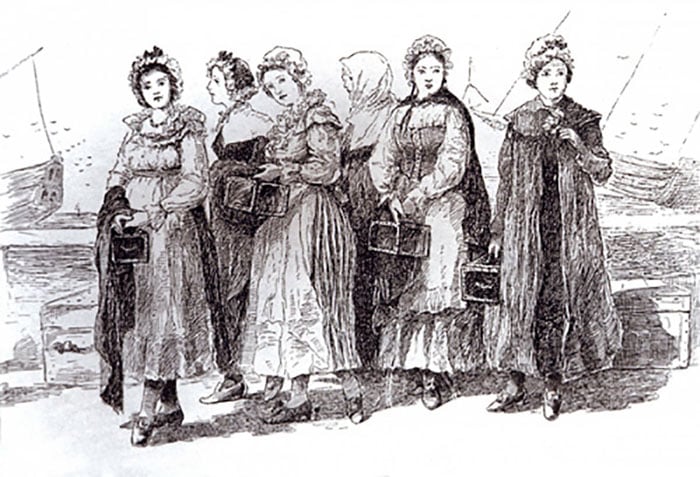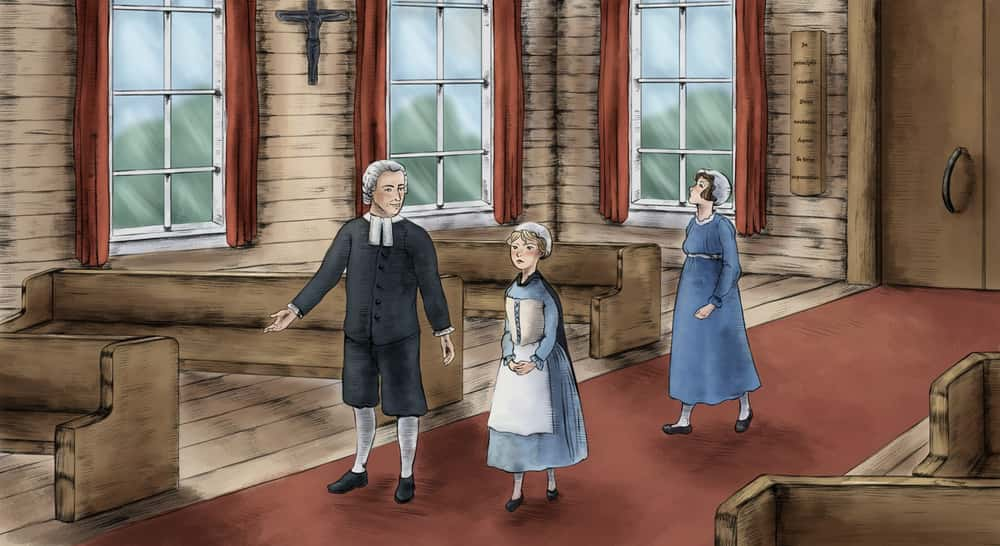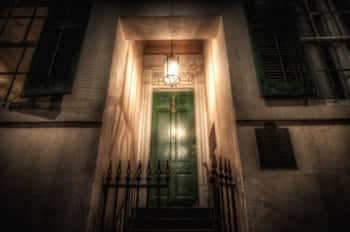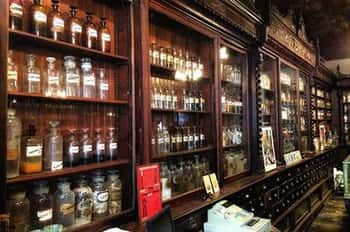They arrived in 1728.
The port of New Orleans bustled with activity; the shouting of men, the stamping hooves of the horses, the scraping of boxes as the ships were unloaded. For the group of young women aboard the ship, La Nouvelle Orléans was a taste of the forbidden, of the unknown.
The women were ushered down the wooden plank onto the soiled ground; to their chest, they each clutched a coffin-shaped cassette, or small chest, that held all of their belongings. After nearly six months traversing the rough waters of the Atlantic Ocean, the young women were eager to make their arrival. Eager, and perhaps, also a bit nervous about their welcome.
Handpicked by the Bishop of Quebec on order of the French King, the young women were all of appropriate age and background. On their agenda was only one thing: to make a good match and marry one of the French colonists inhabiting the budding Louisiana colony.
Upon the sight of them, however, rumors began to circulate throughout the town.
"Pâle," the Frenchmen all muttered to themselves as they spotted the women meant to become their brides. So very pale were the girls that their skin reddened and blistered within moments of enduring the hot, sub-tropical sun.
Clutching their casket-shaped chests in tight grips, the young women—Filles a la Cassette, as they became known—were brought to their new home. Until their respective marriages, they were to remain under the care and the protection of the Ursuline nuns.
The fate of the Filles a la Cassette was not as was expected. The local men in the Vieux Carre gravely disrespected the women. Some were placed into unwanted marriages, only to be mistreated by their husbands. Others, upon finding themselves alone and unwed, were forced into prostitution.
The French King had had enough. He demanded the girls return to France.
The Sisters of the Ursuline Convent then took the caskets-shaped chests that had once carried everything that the Filles a la Cassette had owned and climbed the steps to the third floor of the Convent at 1112 Rue Chartres. Up until this time, the windows and door to the third floor had always been sealed shut, and they remained so at that time as well.
But a short time later, when the nuns returned to the third floor, they found that the chests . . . they were completely empty. They spared no section of the third floor during their search though the belongings were never recovered. Fearing that the young women might have been something other than what they said they were, the Ursuline nuns spared no expense in making sure that nothing ever left that third-floor space.
The doors were bolted shut; the nails to the windows were blessed by the Pope himself and locked in place.
The whispering began anew, but this time they added one more word: "Vampire."
In 1978, two paranormal investigators seeking answers to whether the Filles a la Cassette had, in fact, been vampires, camped out directly in front of the Old Ursuline Convent at 1112 Chartres Street. They'd been previously kicked off the property itself for loitering, but decided to stay the night and see if they experienced anything right outside of the walls themselves.
The hours passed, trickling by minute by minute; so slow was it, that sleep overtook them. And in their slumber, they failed to notice the third floor's shutters—the same one's which had been locked shut by the blessed nails—open and shut, open and shut. The recording cameras whirled to a stop as the scene faded to black.
The next morning the bodies of the investigators were found.
Their bodies had been torn open, ravaged as if by the claws of animal . . . their bodies drained of blood.
Vampires. Filles a la Cassette. It was all one and the same.

The legend of the Casket Girls as blood-draining vampires has circulated since at least the early twentieth century. Tour guides bring wide-eyed tourists out to stand just across the street by the Beauregard-Keyes House Museum. There, as the tourists stand on their tiptoes, phones clutched in hand, they attempt to peer over the outer walls of the Old Ursuline Convent. Then, the guide flings one arm up, index finger pointing squarely at the third floor of the Convent where the louvered shutters are tightly shut.
"It is there," the guide says, "that the Casket Girls still remain locked away. Without the nails blessed by the Pope, the young women who once hailed from France would be out, roaming the streets to feast on the blood of the living."
(I'll give you a moment.)
(Another maybe).
(Just one more).
Okay. Surely you didn't believe any of that nonsense? Tales of murder, blood-starved women and vampires seem like a satirical spin-off to the legends of Vlad the Impaler, the Romanian prince who did, in fact, stick his enemy's heads on spikes leading up to his castle. (Even this was only done to ward off any other invading armies who thought they could take Vlad; and even this was done because Vlad was short on military supplies and had to think outside of the box).
But for the so-called Casket Girls, the rumors of vampires and the undead has no basis for truth. Rumors of vampirism is a much newer addition, perhaps exacerbated by Anne Rice. Fans immediately began to suspect that the Filles a la Cassette were actually transporting vampires in the chests from the Old World to New Orleans.
As for the prostitution factor . . . well, that deserves an even closer inspection.
The Casket Girls were not the first program initiated by the French Crown to create population growth in the New World. The Canadian colony of New France (modern-day Quebec) was the first, tracing back to 1663.
Apparently that colony, too, was lacking in the way of the fairer sex, and the Intendant of New France, Jean Talon, decided to pen King Louis XIVth and ask him for women. The King complied and began to recruit women to be sent. It was a stringent process—the women had to be between the prime ages of 12 and 25, and they had to provide a letter from their respective parish priests which recommended them for the position.
They were given the name Filles du Roi, the King's Daughters, and between the years 1663 and 1673, over 800 young women made the voyage from France to Canada.
Don't be fooled though: Not all the women made it in Quebec. Some died en route to Montreal; others stood at the port in France and rethought their life decisions before hightailing back to their village; while yet others were actually sent back to France from Canada for failing to live up to the standards of being the Filles du Roi.

The idea that the women were prostitutes was fostered early on, even within a century of the women landing. Baron La Hontan wrote that the women were of "middling virtue" and that the only reason they had chosen to emigrate was because they needed religious absolution from their sins (i.e., they were Ladies of the Night and desperately needed God in their lives).
Except that out of over 800 women whom were sent to New France, only one women was ever charged with prostitution. Her name was Catherine Guichelin, and she only turned to prostitution after her husband decided that he'd much rather live in France. Naturally, he then abandoned her in the new world with their two children.
Still, the rumors continued to persist. And it seems that they sort of became a trend.
The next group of young women came in July of 1704, though they were sent to the French colony in Biloxi.
They arrived on the Pelican at the bidding of Jean Baptiste La Moyne, Sieur Bienville. Like Jean Talon, Bienville had written directly to King Louis XIV for potential brides for his soldiers and men.
After all, the soldiers and expeditions who had sailed down the Mississippi River with Bienville were now "chasing through the woods in pursuit of Indian mistresses." Bienville was desperate.
King Louis XIV agreed and sent a group of twenty-three young women in the care of the Sisters of Charity, an order of Quebec, as well as Father Henry La Vente and three other priests. The marriageable women ranged in age between fourteen and nineteen, but had been specifically chosen because they were pure. Virgins. Necessary bride material for the turn of the eighteenth century.
An alleged letter written to Bienville by the French King read, "His majesty send by that ship 20 girls to be married to the Canadians and others who have begun habitations at Mobile in order that this colony can firmly establish itself. Each of these girls was raised in virtue and piety and know how to work, which will render them useful in the colony by showing the Indian girls what they can do, for this there being no point in sending other than of virtue known and without reproach."
The women were chosen well, thanks to then Bishop of Quebec, Jean Baptiste de La Croix de Chevrieres de Saint-Vallier, and the Biloxi colony blossomed.
And then the next group arrived, who weren't so very pure or virtuous.
Once again, Bienville was desperate for women. This time he was in the new colony of New Orleans and it was the year 1721, but the desperation was all the same.
The men of New Orleans needed brides, as they were having illicit affairs with enslaved women or women of the gens libres de couleur, to say nothing of the fact that the men were reportedly the scum—Bienville's words—of France with only debauchery on their minds.
Bienville needed good, virtuous women.
Who was the King of France to turn down such a proposal? He gladly acquiesced. This time he turned to the Hôpital Général de la Salpêtrière for the women Bienville needed.
Eighty-eight women arrived near Mobile Bay on January 8, 1721, and were promptly handed over to Bienville to deal with. Unfortunately this time around, the French King had found his "supply" of women from the House of Correction. All were destitute, most were prostitutes, and they were all meant to become proper wives.
As you can imagine, this plan wasn't as well executed as in 1704 or even in 1673 by the French. And these new women? Well, they only added to the terse and debauched environment already raging in New Orleans.
It would come as no wonder that Bienville might try again just a few years later, and it's perhaps this event in 1721 that stained the reputation of the Filles a la Cassette in 1728.
Did the French colonists once again think that Bienville had brought them prostitutes as wives? It's perfectly plausible, especially since similar rumors had followed each shipment of young women to the New World in the prior sixty or so years.
But what we have no record of is any of the early New Orleanians thinking that the young women who arrived in 1728 were vampires. Commentary that the women were pale is understandable—after all, they'd been stuck inside of a ship for six months and probably saw little to no sun as they'd been put below desk as was "proper for young, virtuous women."
The French Creoles living in New Orleans would also been quite tan. Situated near the Gulf as it is, New Orleans is a sub-tropical climate. In comparison to the sun-kissed skin of the Frenchmen, no doubt the Casket Girls would have looked nearly transparent.
The word "casket" was not widely used until the mid-nineteenth century to refer to burials or the dead. Cassette is a Middle French word, but refers to instead "a small box for jewels" or "chest."
The Casket Girls were known to have brought cassettes with them, but they literally were meant for storage. Luggage. (Can you blame a girl for wanting to bring as much with her when traveling to an unknown location?)
The author Nathaniel Hawthorne reconfirms this idea when he said in 1863, "Caskets! A vile modern phrase, which compels a person . . . to shrink . . . from the idea of being buried at all."
By 1900, the term "casket" in relation to a burial object was widespread in North America. In the early eighteenth century, the cassettes brought with the young women were—sorry to disappoint—nothing but a chest, unlikely even in the shape of a casket or coffin at all.
Although it's great to imagine the Pope—which one though? We don't even know that!—blessing the nails to keep the vampires locked inside of the attic space . . . Well, it's highly unlikely.
In reality, those louvered windows are a lovely set of hurricane shutters installed some time in the last decade or so.
And within that third floor . . . we at Ghost City Tours have it on good authority from the Archivist of the Archdiocese of New Orleans that there is nothing on the third floor of the Old Ursuline Convent besides archival records and other storage items.
Not as thrilling as vampires or abandoned caskets for the undead, but there you have it.
It's hard to say why the vampire myth has stuck around for so long, and who exactly started it.
Was it really Anne Rice's take on it that sparked the whole thing? Is it simply the fact that we New Orleanians love the alternative and weird, especially when it is intrinsically connected with our beloved history? Perhaps it's simply a case that the legend is retold and retold again because tourists love to hear it.
What we do know is that the Casket Girls went on to make some brilliant marriages in their initial years here in the French Quarter, and it's said that almost of all of New Orleans can trace their lineage back to one of the young women sent from France to become the French Creoles' brides.
Another myth perhaps?
Maybe we should just stick with the blood-sucking, undead version instead.
Want to hear even more about the Haunted Old Ursuline Convent? Want to get up more close and personal with this particular story? The Old Ursuline Convent is one of our regular stops on our Ghosts of New Orleans Tour.

Was this the site of a grizzly mass murder?

New Orleans' most haunted Cemetery

Who haunts this museum, and why?